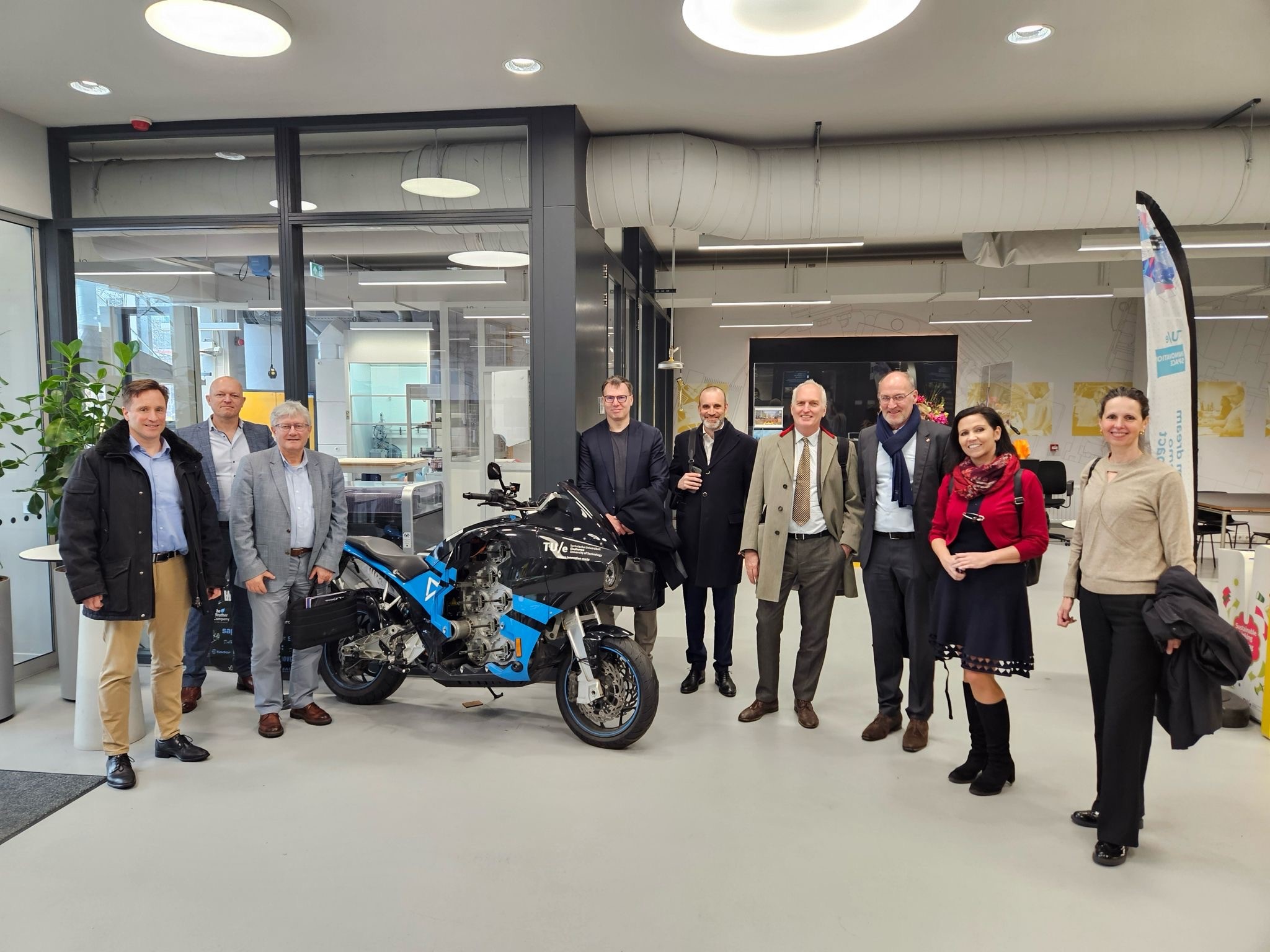
Last February, Wiegert Smallegange, Director of NCCC Traders by Nature, was honored to join a delegation of Czech business and government leaders on an insightful visit to Eindhoven and the Brainport region in the Netherlands. Invited by CTP's Bert Hesselink and Cees Admiraal, the delegation explored the workings of high-tech ecosystems in the Netherlands, focusing on their advantages and the key components that drive their success.
Written by: Wiegert Smallegange, Director, Netherlands-Czech Chamber of Commerce
Our journey began with an early departure from Prague Airport. After arrival, we proceeded to the Automotive Campus Helmond, a technology center close to but outside the Eindhoven region. Pieter Rahusen, Commercial Manager Automotive Campus Innovation, provided an engaging presentation and tour of the campus, highlighting its significance for technical innovation and development in the automotive industry. As part of the campus tour, we visited a team of students working on improving the charging time of car batteries. Their dream is to develop an electric car that can race in the 24-hour Le Mans race. Students stay for one year and at the end of the year hire their successors. Past students remain active in the supervisory board of the organization (a foundation called Inmotion), and any intellectual property developed remains with the students. Funding comes from various corporate sponsors.
During this first visit, we already heard the words vision, cooperation, and trust multiple times -words that would be repeated in every meeting we had that day.
Next, we visited the Technical University Eindhoven (TU/e), the largest Technical University of the Netherlands with over 12,000 students. Alfons Bruekers, managing director of TU/e-Innovation Space, delivered an informative presentation on Challenge Based Learning – a learning method developed by TU/e. This innovative approach to education fosters collaboration and problem-solving skills among students. Students learn to tackle real societal problems in multi-disciplinary teams, often resulting in forming start-ups with the newly developed technologies. Still, the emphasis of the TU/e lies on the development of skills of students. During our small tour of the facilities, the group witnessed several student teams working on different exciting projects.
Following this, we toured the Brainport Industry Campus (BIC), where we received a presentation by Renee Versteegde-Derks and Mark van Lieshout on the campus's role in advancing industrial innovation, and explored the facilities. BIC is a hub for high-tech manufacturing, where over 50 companies and educational institutions collaborate in a modular, sustainable building. By sharing knowledge, experience, and facilities, BIC drives innovation and shapes the Factory of the Future program. The tour provided valuable insights into the cutting-edge technologies and collaborative efforts taking place at BIC, as well as the planned expansion of BIC, which next to BIC1 will be enlarged with BIC2, 3, and 4.

In the afternoon, we arrived at the High Tech Campus Eindhoven. Here, Johan Beukema and Casper Wolf from Buck Consultants International (BCI) presented their knowledge on the development of innovative ecosystems, based on 20+ years of experience, advising every day on the development of research and science parks, innovation districts, and areas of innovation. BCI has developed a methodology to analyze a market's potential and then build a successful technology center. One important lesson learned from this session: Proximity matters - Proximity of interconnected companies, people, and other organizations leads to the forming of a community in which people trust each other and knowledge easily spreads and grows.
After the workshop by BCI, CTP’s Cees Admiraal told us the story of High Tech Campus Eindhoven (HTCE), which since 2005 has been closely connected to his own professional past. HTCE began as a research and development center for Philips in the late 20th century, originally known as NatLab or Philips Research Laboratories. It was a hub for technological innovation, particularly in electronics and healthcare. In 2003, Philips transformed the site into an open innovation campus, allowing other technology companies, startups, and research institutions to join. This shift led to rapid growth, making it a leading European tech hub focused on high-tech systems, AI, 5G, and health technology. By 2012, Philips sold the campus to a group of investors, and today, HTCE hosts over 260 companies and 12,500 professionals, fostering collaboration and cutting-edge innovation. It is sometimes referred to as the “smartest square kilometer in the world”, because a. it measures almost exactly 1-by-1 square kilometer and b. there is no other square kilometer in the world where so many patents have been produced as here.

Our visit continued with a tour of the campus grounds, showcasing its state-of-the-art facilities and vibrant innovation community. We visited HighTechXL, an accelerator for high-tech startups at HTCE, and finished our program with a visit to Carbyon, a company specializing in capturing CO2 directly from the air to combat climate change.
The program of the day concluded with our trip back to Prague. On our way back, we reflected on what we had learned, what could be implemented in the Czech Republic, and what is needed for this. Shortly after our trip, we planned a follow-up meeting with all people involved. Goal: to create and grow successful high tech ecosystems in the Czech Republic. To be continued.